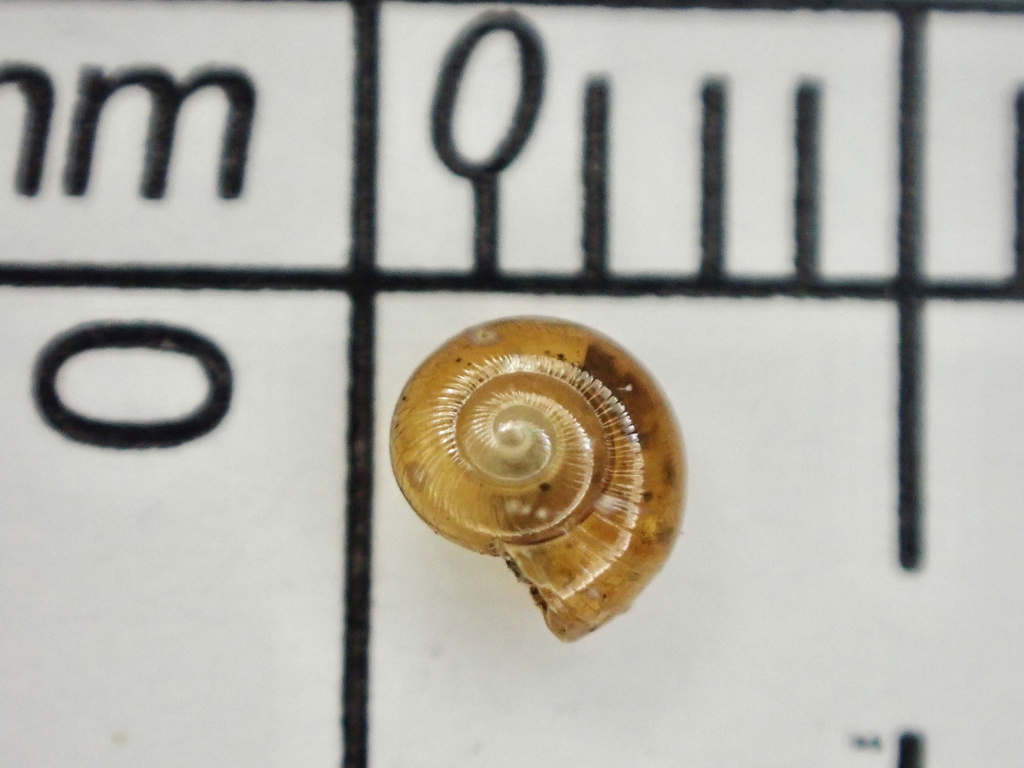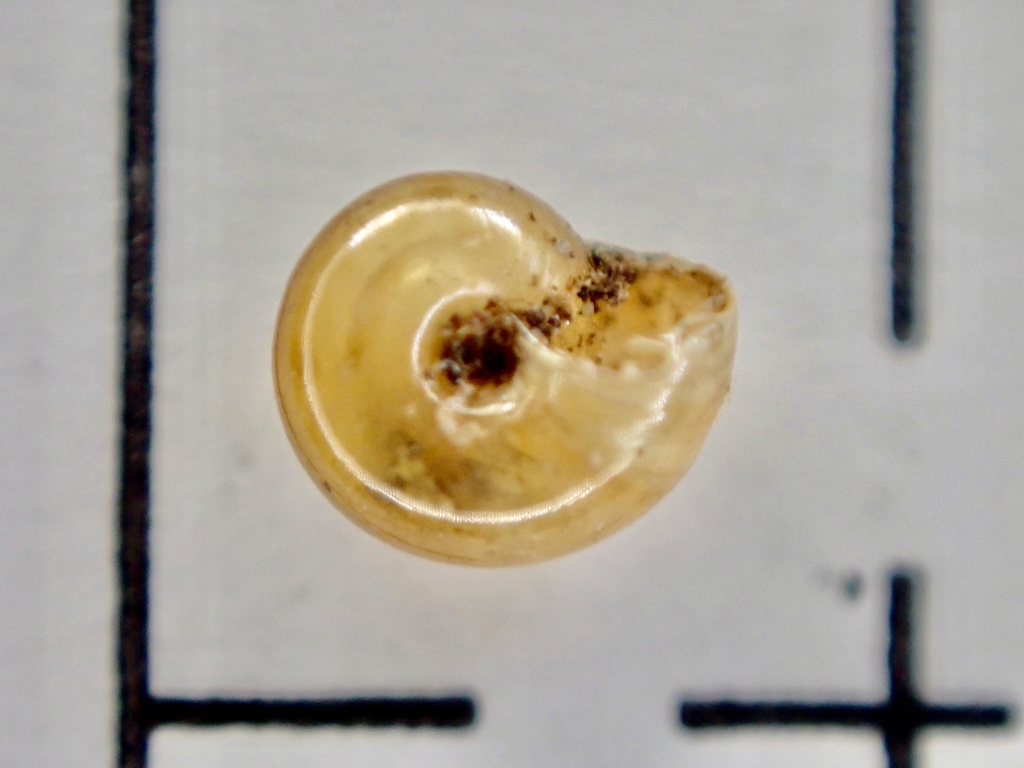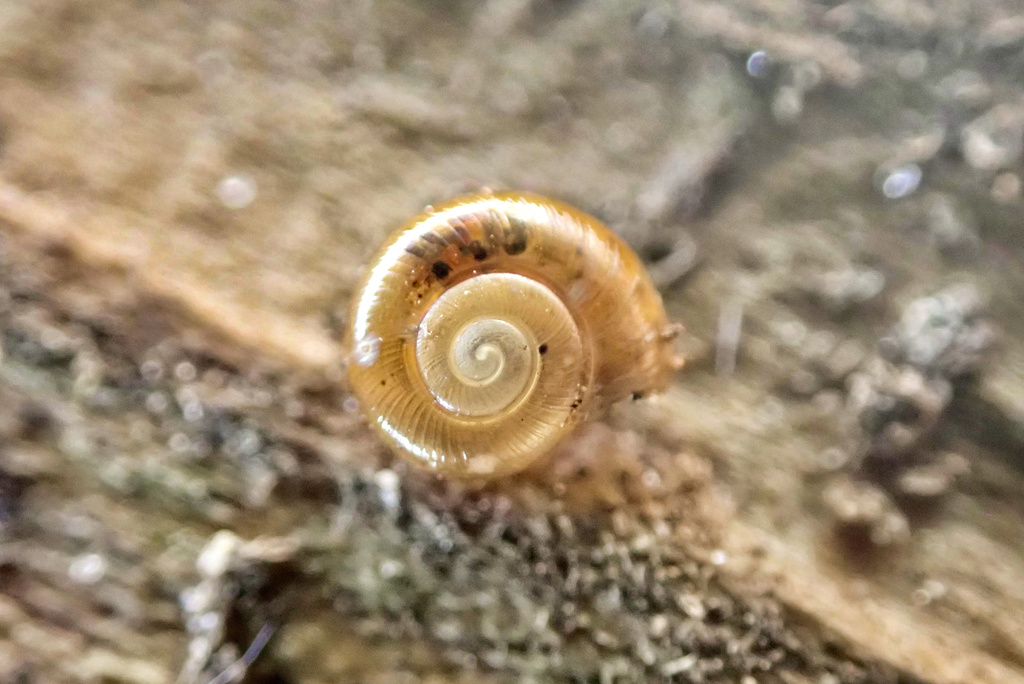



Image Usage Information
Family: Gastrodontidae
Common name: Amber Glass
Discovery: Gould, 1841
Identification
Width: 4.5-5.2 mm
Height: 2.5-2.8 mm
Whorls: 4.2-4.5
Perpolita electrina is average sized, having a depressed shell with a slightly rounded apex and whorls that increase relatively rapidly but gradually in size. The final whorl does not increase more rapidly than previous whorls. The umbilicus is about on quarter to one fifth the shell width. The shiny and translucent shell is sculptured with closely and irregularly spaced narrow indentations that run parallel to the indistinct growth lines. These grooves extend from the apical surface becoming progressively weaker and less numerous towards the umbilicus. In addition, there is sometimes microscopic sculpture of very weak incised spiral lines. The shell is uniformly translucent amber-brown. The dorsal surface of the body is nearly black fading to dark gray on the sole of the foot. Internally, the apex of the penis has circular pilasters.
Ecology
This animal is found in a wide variety of wet habitats including wet prairies, freshwater marshes, lake margins, and wet forests. It is tolerant of a wide range of soil pH and is found on acidic, neutral and basic soils (Nekola, 2010).
Taxonomy
There are many synonyms for P. electrina including Nesovitrea electrina, Helix electrina, H. janus, Zonites radiatulus, Z. viridulus, Hylania pellucida, H. radiatula Electrina, Vitrea radiatula, Vitrea hammonis, Retinella hammonis, and R. electrina.
Distribution
Nesovitrea electrina has a remarkably wide native range in North America – from the Arctic Ocean south to Virginia. In Virginia in the east, and from Alaska to New Mexico in the west.
Conservation
NatureServe Global Rank: G5, Secure
